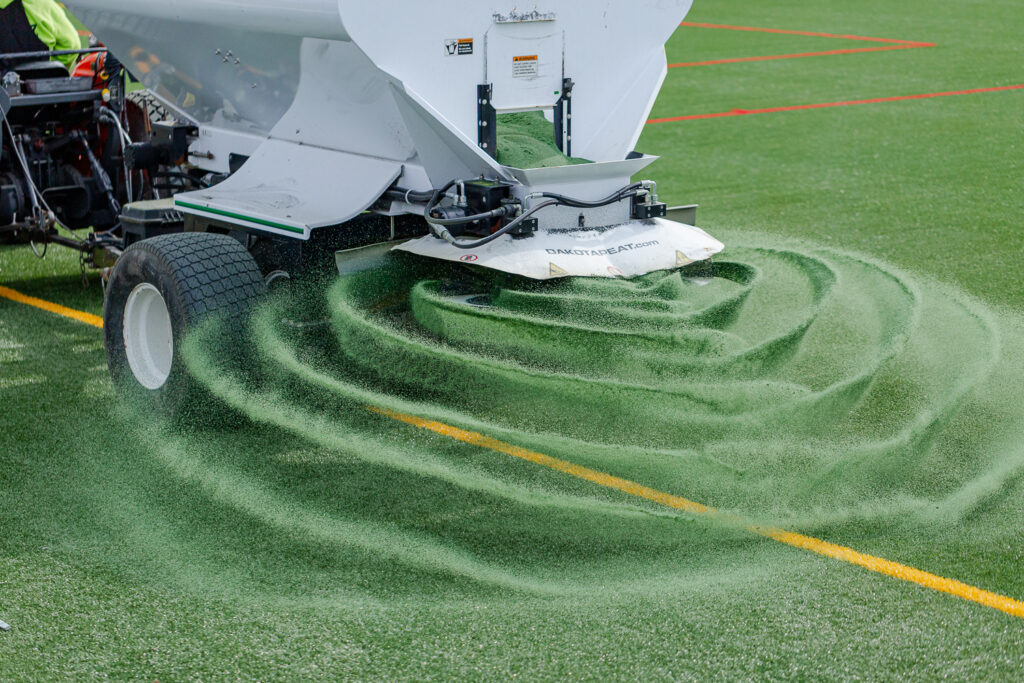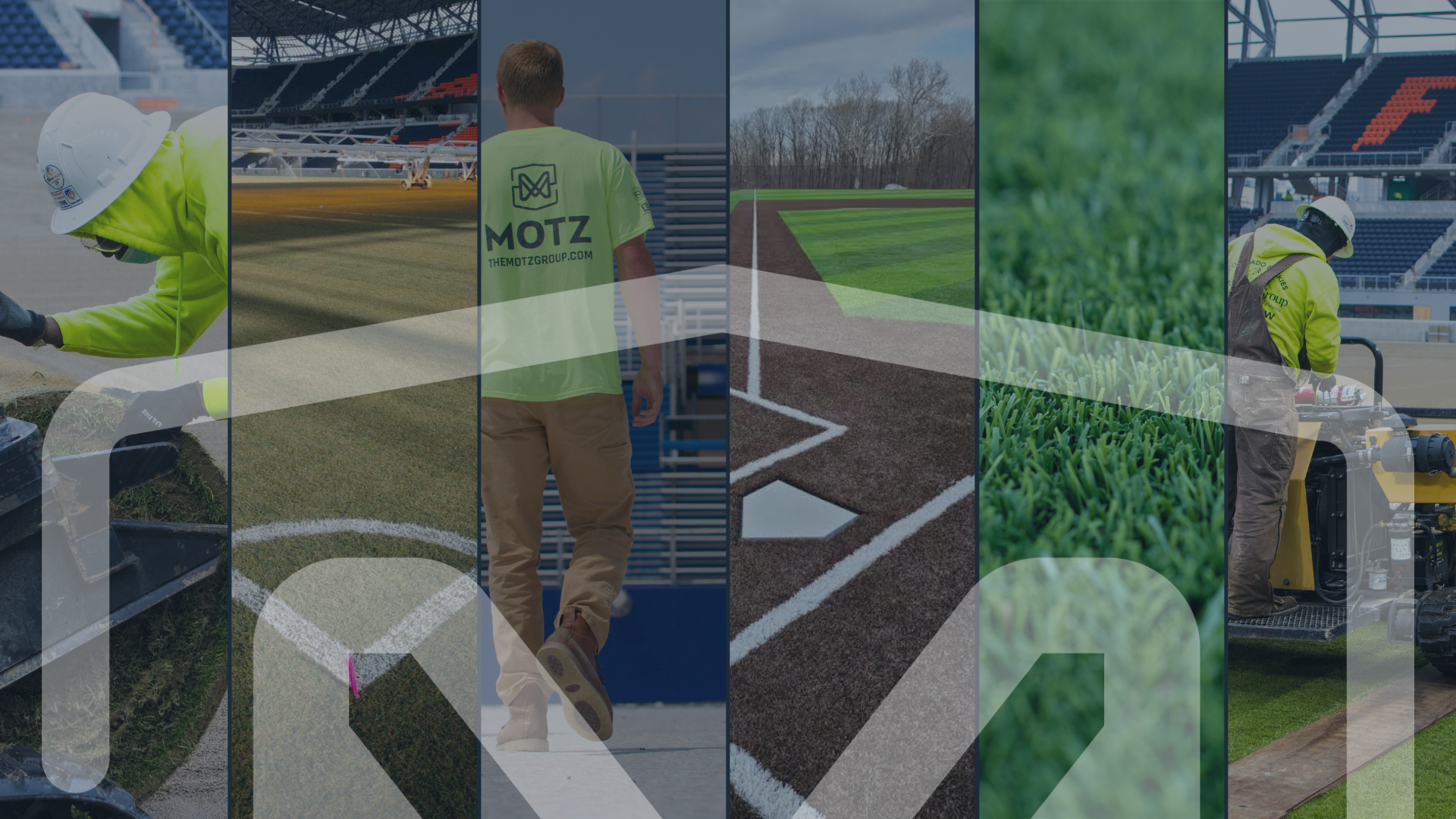
Sports Field Blog
Subscribe To Email Updates
Subscribe to our weekly newsletter and we’ll send updates straight to your inbox
How Can A Shock Pad Benefit My Synthetic Turf Field?
The Evolution of The Synthetic Turf System
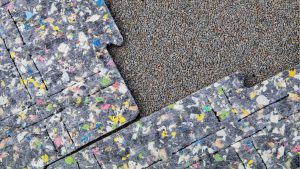
The synthetic turf industry is no stranger to evolution. Synthetic turf systems have gone through quite an evolution from the initial installations in the 1970s until today. In that time, industry trends and consumer feedback have led to innovations in additional synthetic turf system components. Innovations like alternative infills, shock pads, and turf fiber advancements, which are very popular choices today. These innovations are relatively new as they were not top of mind for a field owner even 15 years ago.
One of the key system components to emerge as an answer to a need in the industry is a shock pad, which is sometimes referred to as a shock absorption pad. Shock pads for sports fields lead to increased athlete protection, performance, and the field’s longevity. With a focus on athletes’ safety and increased concussions in contact sports, more facility owners install shock pads for added head to surface fall protection. Shock pads provide an added layer of impact absorption, lowering the risk of injury after a fall. Applicable under any artificial turf system and with any type of infill, a shock pad provides many added benefits to the players running on the field.
Artificial Turf Shock Pad Help Prevent Injury, Improve Playability And Create a Consistent Surface
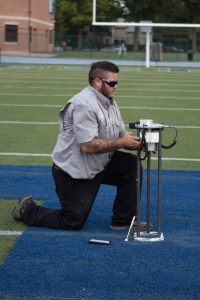
There are different brands and types of pads, varying in benefits, materials, thickness and price. Some shock pads nowadays even come from recycled turf carpets. Shock pads typically come in two main types, pre-fabricated (factory made and transported to the field) and in situ (mixed on the construction site). To learn more about shock pad components and industry guidelines, reference the Synthetic Turf Council’s Industry standards. Regardless of the shock pad you choose for your field, they can be a great safety addition to your artificial turf system. All pads, if installed correctly, can help make a synthetic turf surface safer by providing a consistent GMAX score, a Critical Fall Height, and optimized shock absorption. This is especially important in high contact sports such as football and rugby where an athlete may hit the ground fairly often.
Learn more about the importance of synthetic turf performance testing and how a shock pad has a positive impact on test results. One of the most common tests for field safety is a GMAX. A GMAX test measures the shock attenuation of body impact on the synthetic turf. Simply put, a GMAX score indicates athletes safety levels and protects them from potential injuries by informing field owners when their field is nearing replacement. A higher GMAX result indicates a potential need for a replacement to ensure player safety, which tends to occur later in the life of the field. Synthetic turf surfaces with a pad, however, are seeing consistently lower GMAX results from day 1 through day 3,000, and are able to experience an extended lifespan. Many are able to avoid replacement an additional two-four years beyond the standard lifespan of eight years for synthetic turf fields that do not have a pad.
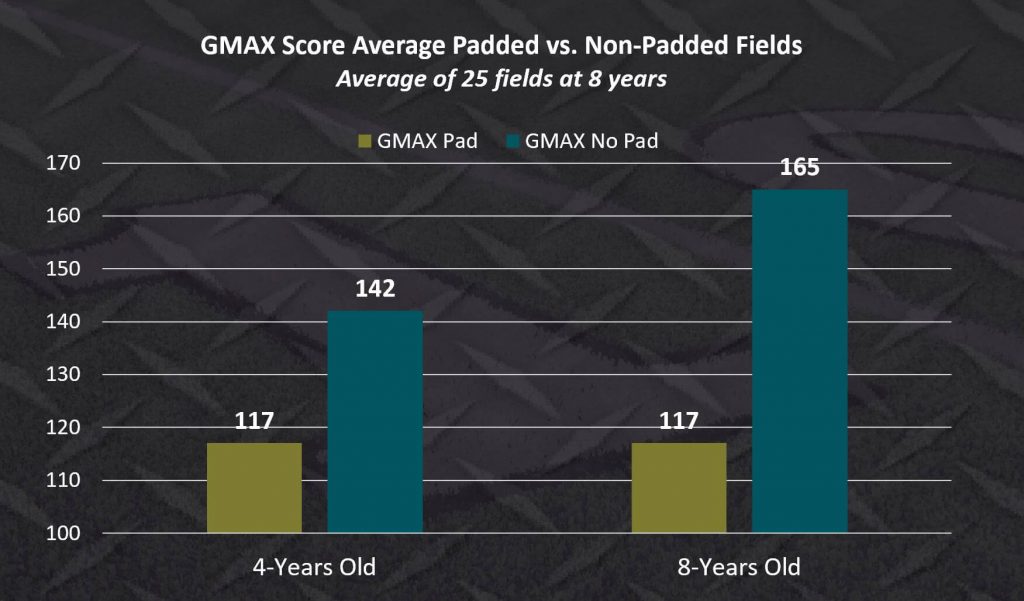
Additional Synthetic Turf Shock Pad Benefits
Artificial turf sports fields with a shock pad installed are creating a more uniform playing surface for the athletes playing on the field. Shock pads enhance the surface drainage of the synthetic turf field, allowing participants to get back to play quickly after a rainstorm.
While shock pads are an additional cost, they are an investment in athlete safety and can often be reused in multiple field replacements meaning you can typically double the years out of the price paid for one field installation. Your total system investment can also be lowered by installing a shock pad because you can install a shorter pile height of turf which in turn means you do not need to install as much infill into the turf. An additional benefit to installing a shock pad in your synthetic turf system is a more diverse synthetic turf infill selection. Performance infills such as Envirofill and Safeshell require a shock pad for resilience but offer a more firm and consistent field surface with potential benefits such as heat reduction and antimicrobial product protection.
Overall, installing an artificial turf shock pad in your athletic field can help to increase player safety, performance, and the life expectancy of your turf field. For more information on shock pads for sports fields, contact our team. One of our field consultants will be in touch to walk you through the artificial turf shock pads available on the market and to determine the best application for your field.
Similar Blogs

